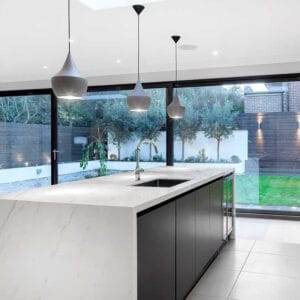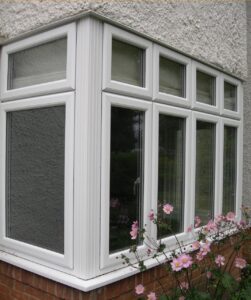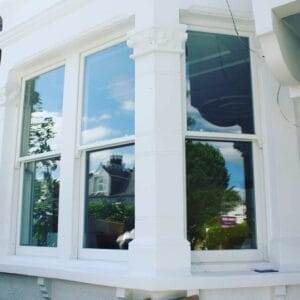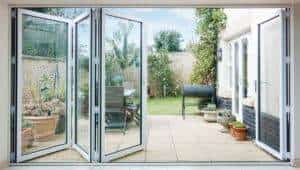Casement windows are a type of window that open and close with a crank. This gives them the name “casement window,” because when they’re closed, the top of the window looks like a casement door. They come in different shapes and sizes, but all casement windows have one thing in common: they use metal frames and glass panels to let light into your home.
1.What are Casement Windows?
Casement windows are a type of window that is attached to its frame by one or more hinges. The most common type of casement window is the side-hung window, where the hinges are located on one side of the window. Casement windows can also be top-hung, where the hinges are located at the top of the window, or bottom-hung, where the hinges are located at the bottom of the window.
Casement windows are usually opened by turning a handle that is connected to a crank mechanism. This mechanism converts the rotational motion of the handle into linear motion, which opens or closes the window. Casement windows can also be opened manually by pushing them open from their hinge side.
2. What are Sliding Windows?
Sliding windows are a type of window that slides open horizontally on tracks. The most common type of sliding window has two sashes – one fixed and one moveable – that slide past each other on tracks. Sliding windows can also have three sashes, with two moveable sashes that slide past each other and one fixed sash in the middle.
Sliding windows are usually opened by moving a handle back and forth to disengage the locking mechanism and then sliding the window open along its tracks. Some sliding windows also have a tilt feature, which allows them to be tilted inward for easy cleaning from inside your home.
3 .What Are Awning Windows?
Awning windows are a type of window that is hinged at the top and opens outward from bottom to provide ventilation while keeping out rain and pests. Awning windows are often used in combination with other types of windows, such as casement or picture windows, to create an attractive architectural design for your home’s exterior.
The Different Types of Casement Windows
Casement windows are one of the most popular types of window, and come in a variety of materials including aluminium, timber and uPVC. They are usually hinged on one side, and open outwards to provide good ventilation.
Aluminium casement windows are a popular choice for those looking for a durable and low-maintenance option. Timber casement windows offer a traditional look, but require more regular upkeep than aluminium or uPVC windows. uPVC casement windows are a cost-effective option that is easy to maintain.
The Benefits of Casement Windows
There are many benefits of casement windows, which is why they are such a popular choice for homeowners. Here are just some of the benefits of casement windows:
Casement windows are very energy efficient. They provide a tight seal when closed, which helps to keep your home warm in the winter and cool in the summer. This can help to reduce your energy bills and make your home more comfortable year-round.
Casement windows are also easy to operate. You can simply crank them open to let in fresh air, or close them tightly to keep out the elements. This makes them ideal for difficult-to-reach places like above kitchen sinks.
Casement windows also have a sleek and modern look that can enhance the curb appeal of your home. Whether you choose aluminium, timber or uPVC casement windows, they will add style and beauty to your property.
The Drawbacks of Casement Windows
Casement windows are a great option for many homes, but they do have a few drawbacks. First, casement windows are generally more expensive than other window types. Second, casement windows can be difficult to clean because of their size and location. Third, casement windows may not provide as much ventilation as other window types. Finally, casement windows can be noisy when opened or closed.
The Cost of Casement Windows
The cost of casement windows can vary depending on the type of window you choose. Aluminium casement windows are typically the most expensive option, followed by timber casement windows. uPVC casement windows are usually the least expensive option.
Aluminium casement windows are a popular choice for many homeowners due to their durability and low maintenance requirements. However, they can be more expensive than other types of casement windows.
Timber casement windows are a classic choice that can add character and charm to your home. They can be more expensive than other types of casement windows, but they may be worth the investment if you want your home to stand out from the rest.
uPVC (polyvinyl chloride) is a type of plastic that is often used in construction. It is an inexpensive material that is easy to maintain. uPVC casement windows are a good choice for those who want to save money without sacrificing quality or appearance.
How to Install Casement Windows
Casement windows are a great way to let in natural light and fresh air, but they can be a little tricky to install. Here’s a step-by-step guide to help you get it right.
1. Start by measuring the rough opening of the window. You’ll need to know the width, height, and depth of the opening so that you can order the correct size window.
2. Once you have the window, check to make sure that it will fit into the opening. It should be snug but not too tight.
3. If you’re installing an aluminium casement window, use silicone sealant to attach the weather stripping around the perimeter of the window frame. This will help keep out drafts and moisture.
4. For timber or uPVC casement windows, installers typically use expanding foam to secure the frame in place before attaching any weatherstripping.
5 . Installers also use shims (small pieces of wood) to level off any uneven spots around the perimeter of the window opening before inserting the casement window. Once everything is level and plumb, screws are used to secure the casement window in place. Make sure that your screw heads are countersunk so that they’re flush with the surface of the frame .
How to Clean Casement Windows
Casement windows are a great addition to any home. They are easy to clean and maintain and can provide a beautiful view. However, cleaning casement windows can be a bit of a challenge. Here are some tips on how to clean casement windows:
Aluminium Casement Windows:
To clean aluminium casement windows, you will need:
-A soft cloth or sponge
-Mild soap
-Warm water
-A toothbrush
-Baking soda (optional)
Step 1: Begin by dusting the window frame with a soft cloth or sponge. If the frame is particularly dirty, you can use a mild soap and warm water solution. Be sure to rinse the frame thoroughly afterwards.
Step 2: Next, move on to the glass pane. Use a soft cloth or sponge dipped in warm water to wipe down the pane. For tougher stains, you may need to use a toothbrush dipped in baking soda. Rinse the pane thoroughly after cleaning.
Step 3: Finally, wipe down the outside of the window with a soft cloth or sponge dipped in warm water. You may also need to use a mild soap and warm water solution for tougher stains. Be sure to rinse the window thoroughly afterwards so that no soap residue is left behind.
FAQs About Casement Windows
What are casement windows?
Casement windows are hinged at the side and open outward like a door. They’re usually used in pairs, with one window opening to the left and the other opening to the right.
How do casement windows work?
Casement windows have a crank handle that opens and closes the window. The handle is usually located on the bottom rail of the window (the horizontal piece at the bottom).
What are the benefits of casement windows?
Casement windows provide good ventilation because you can open them wide. They’re also easy to clean from the inside because you can reach all areas of the glass from inside your home.
Are there any downsides to casement windows?
The main downside to casement windows is that they take up space on your wall when they’re open. This can be an issue if you have furniture near the window or if you’re trying to maximize natural light in a small room.













